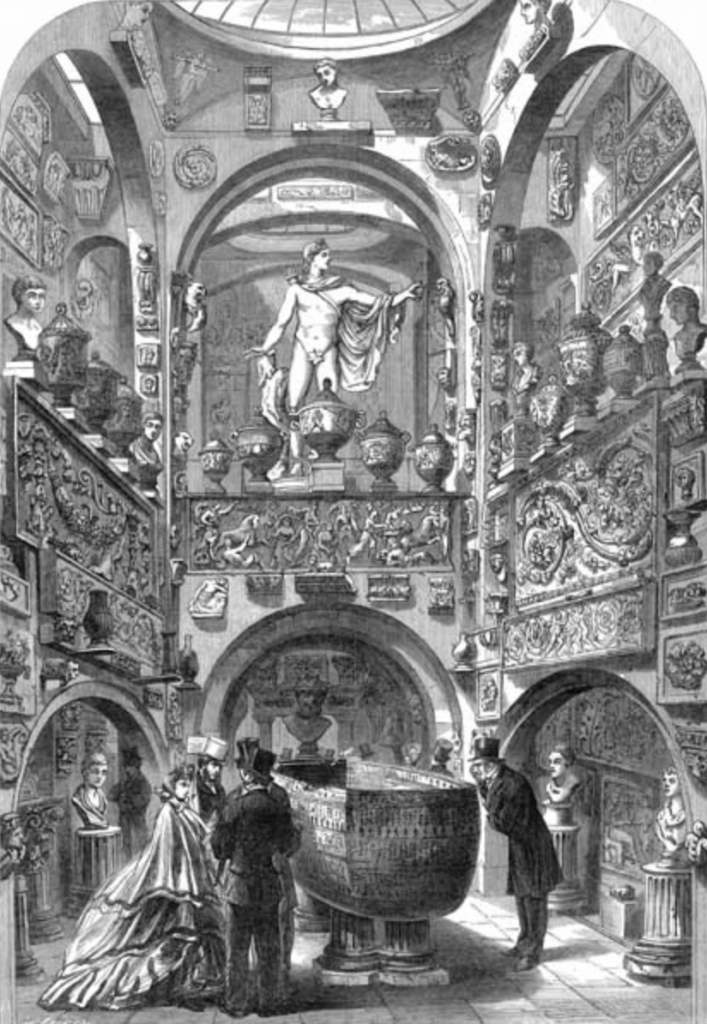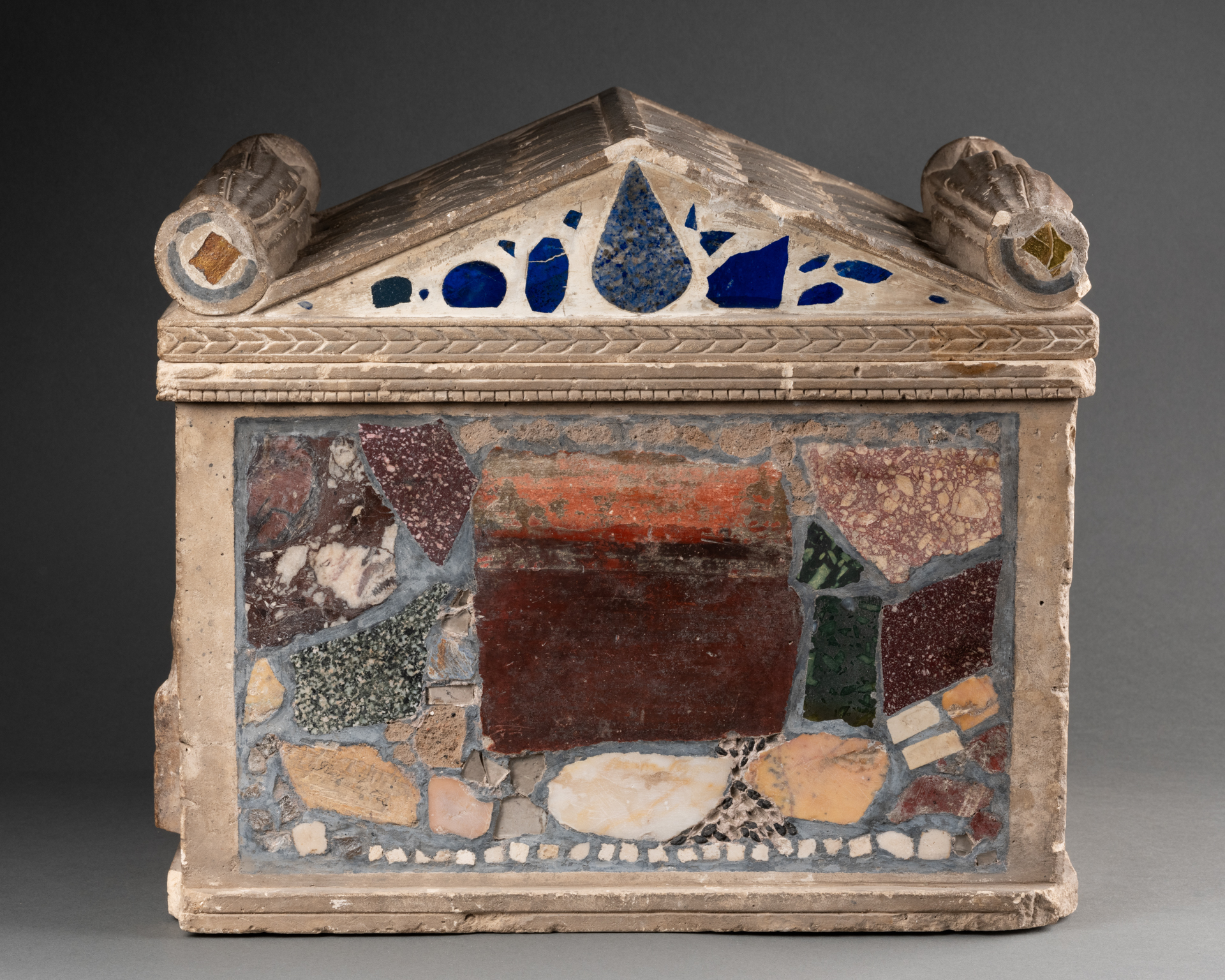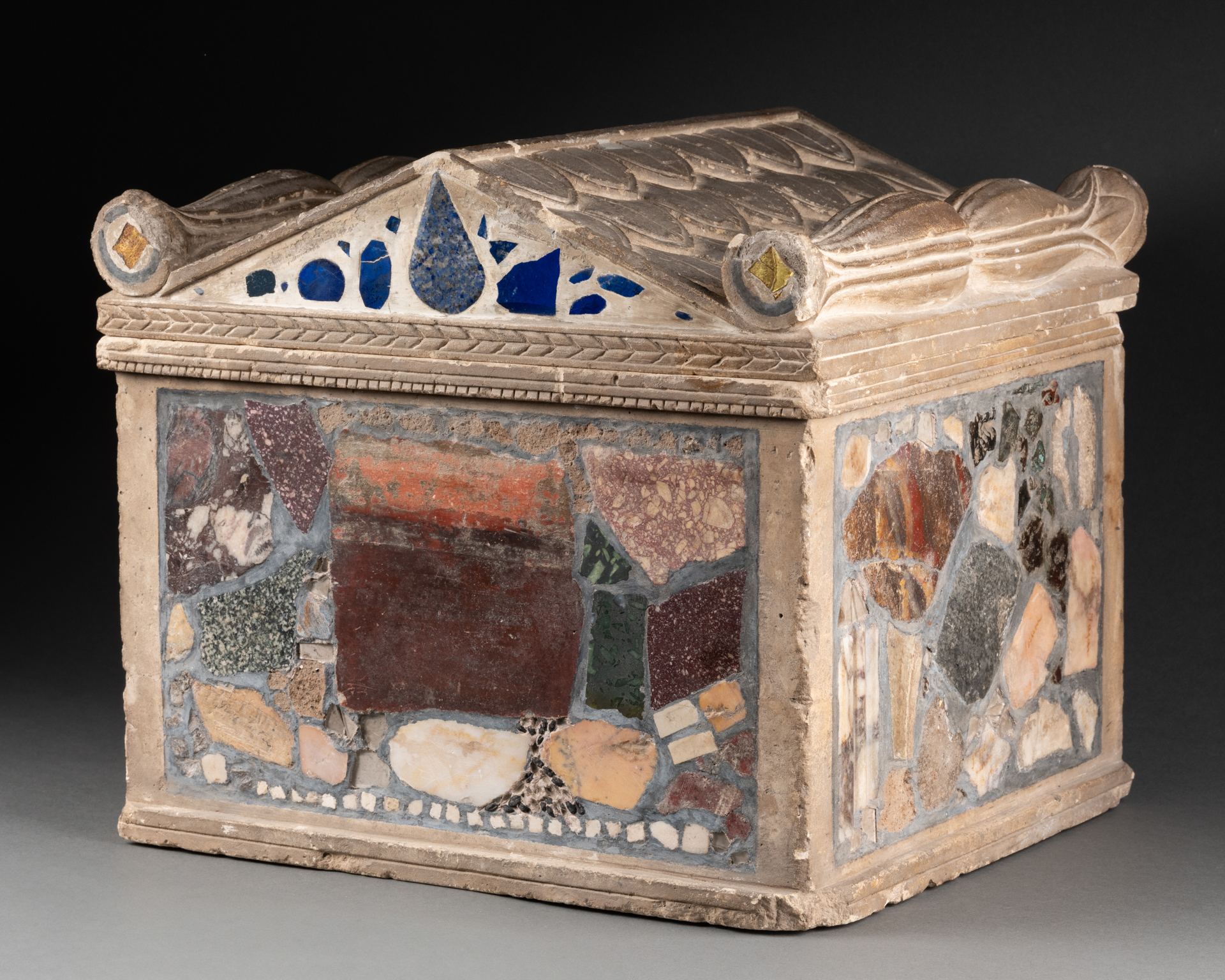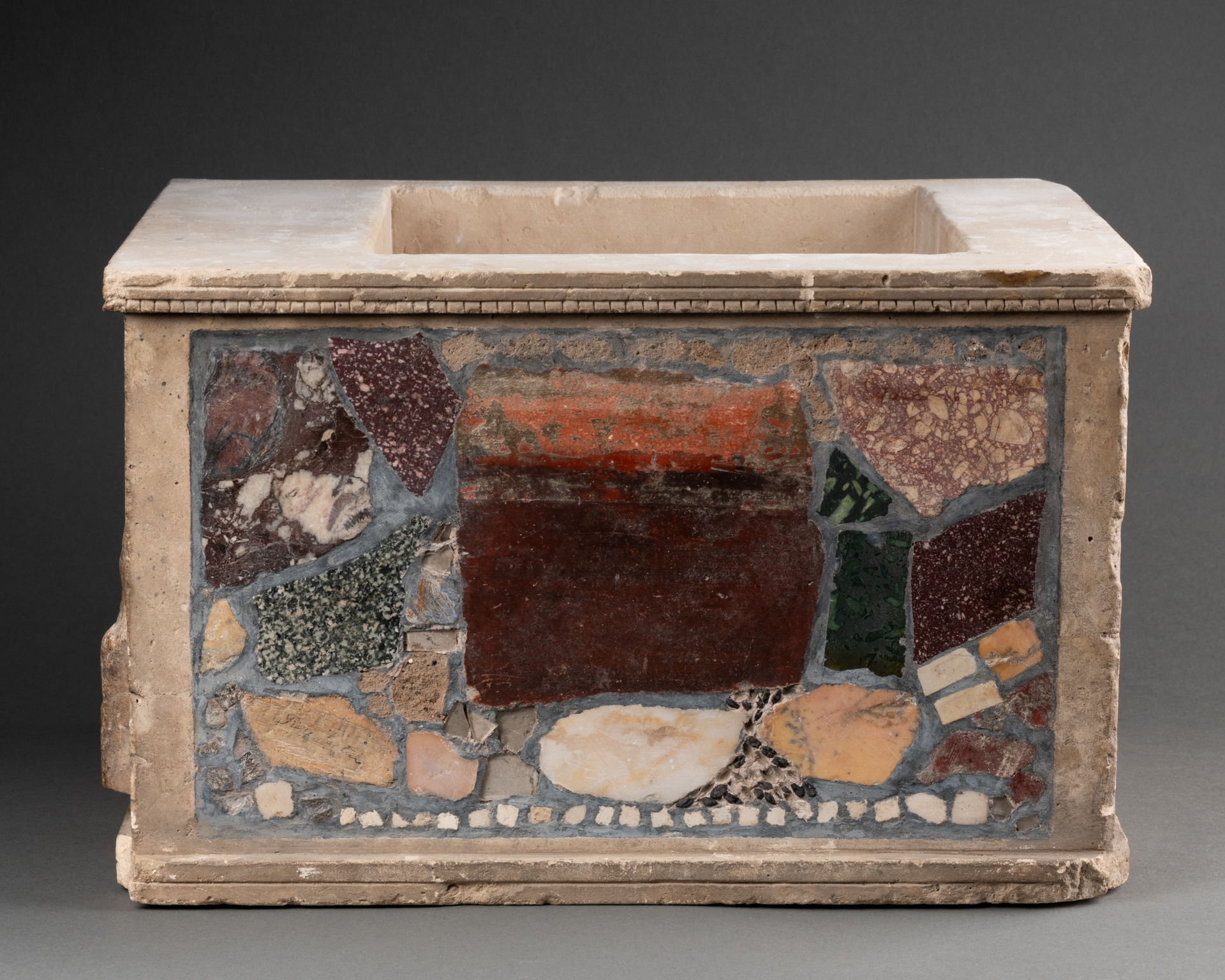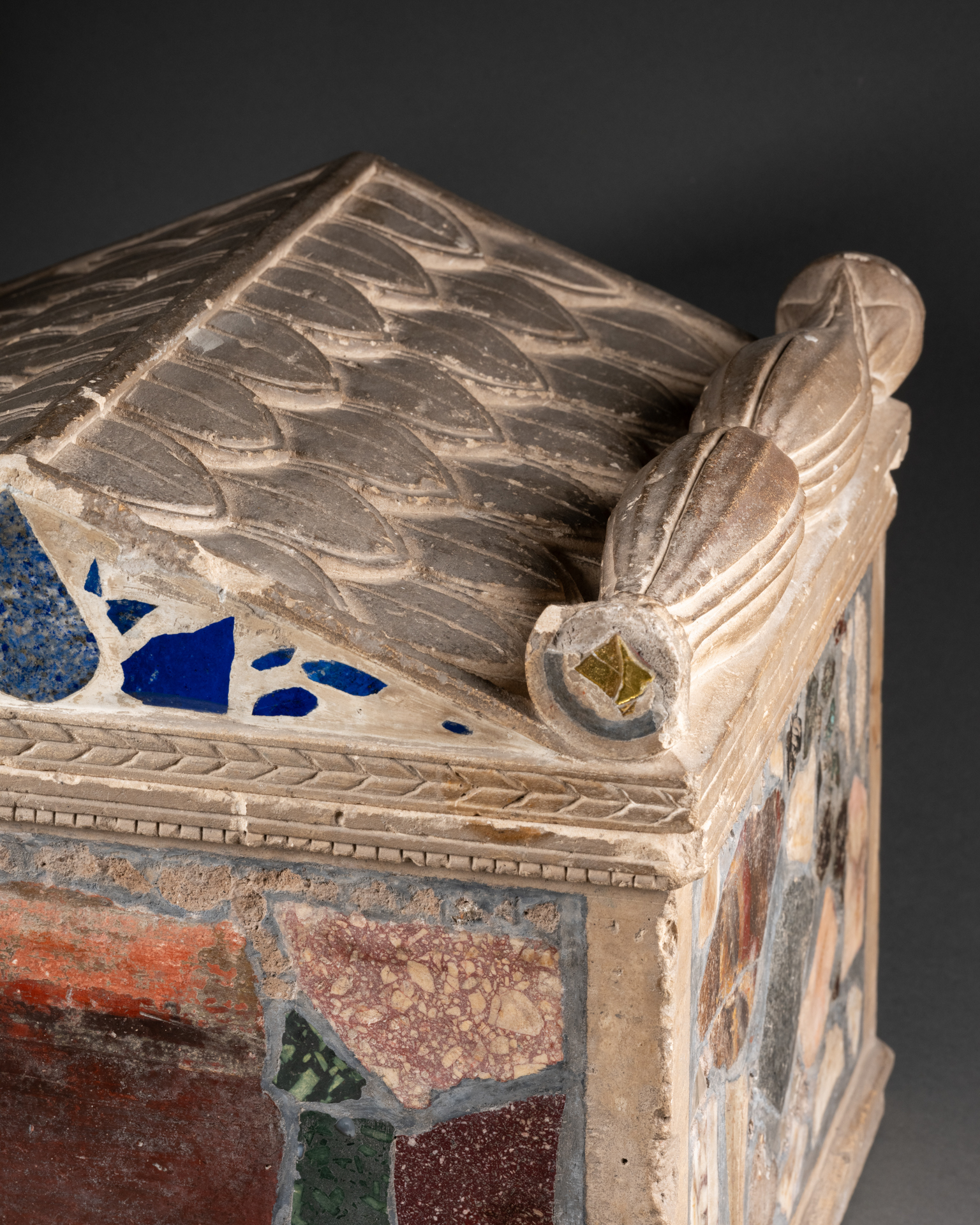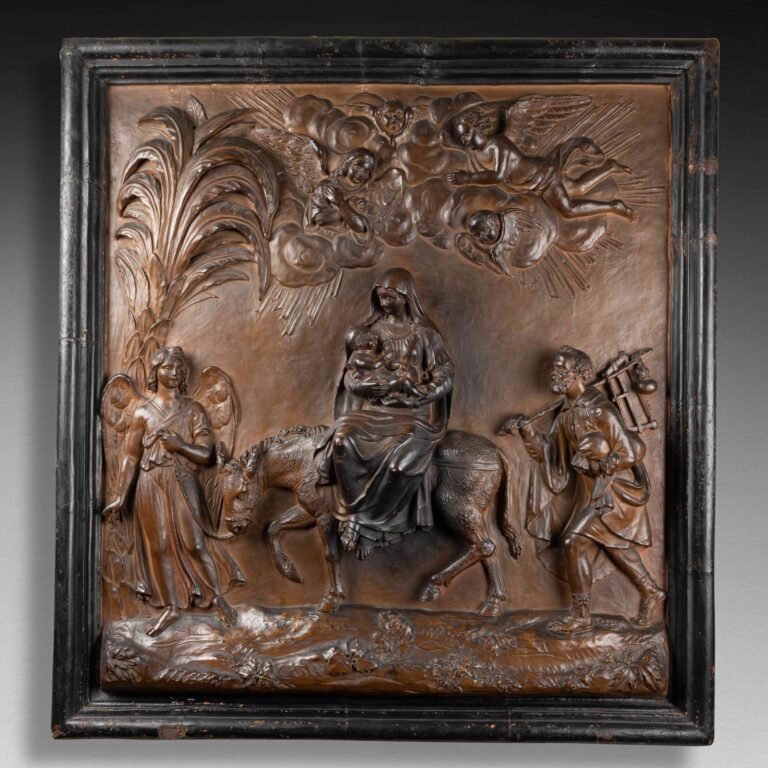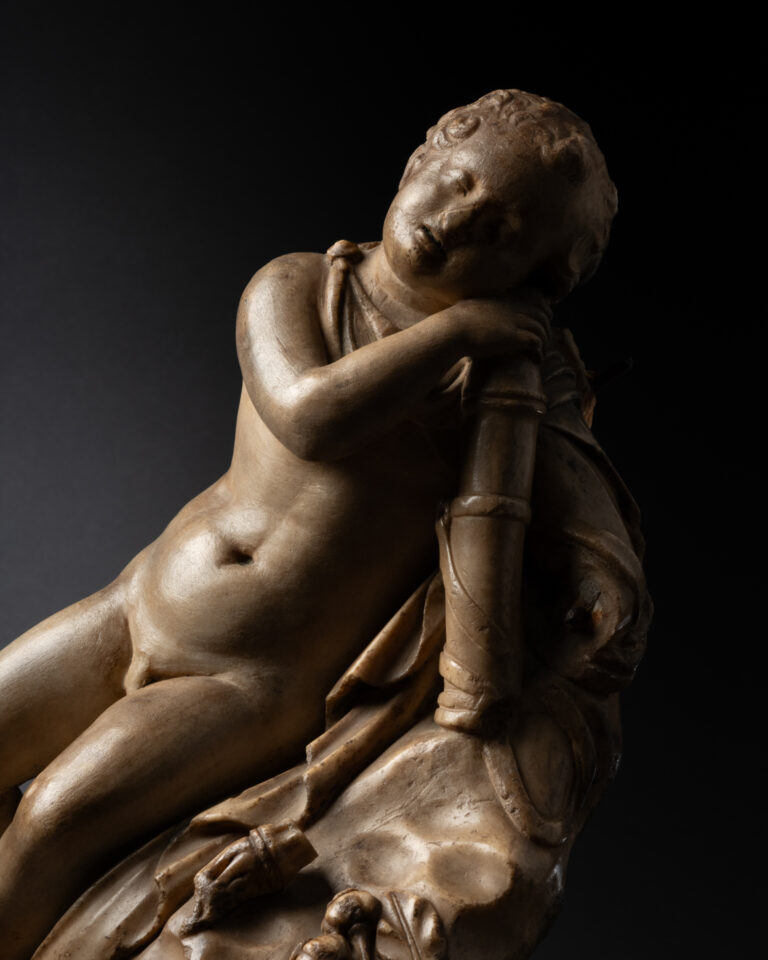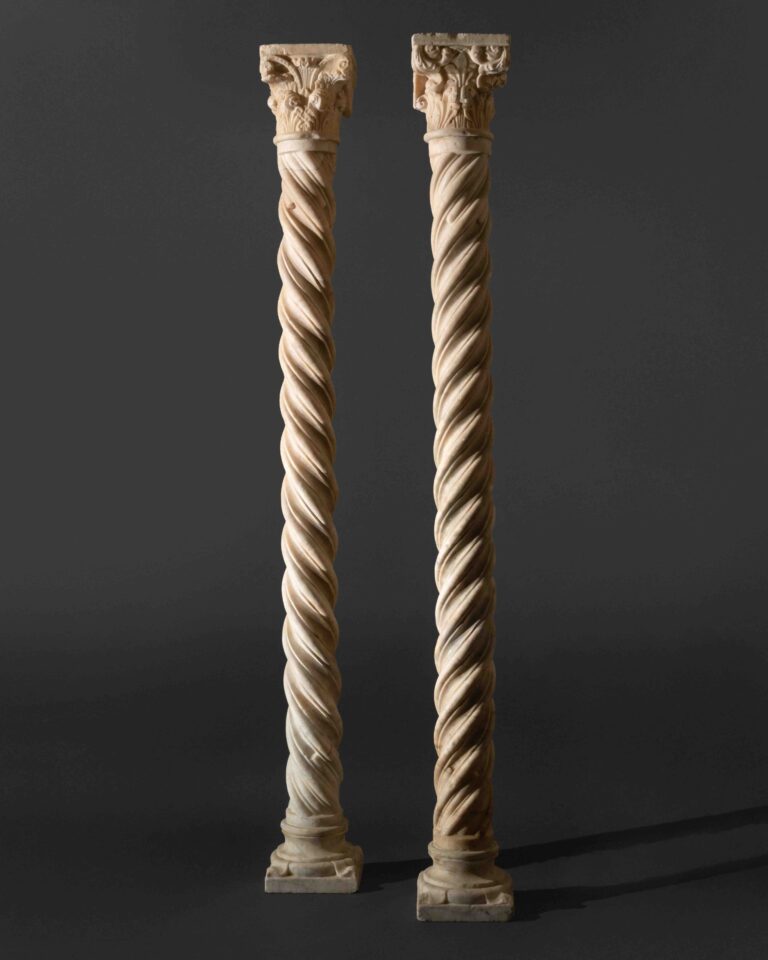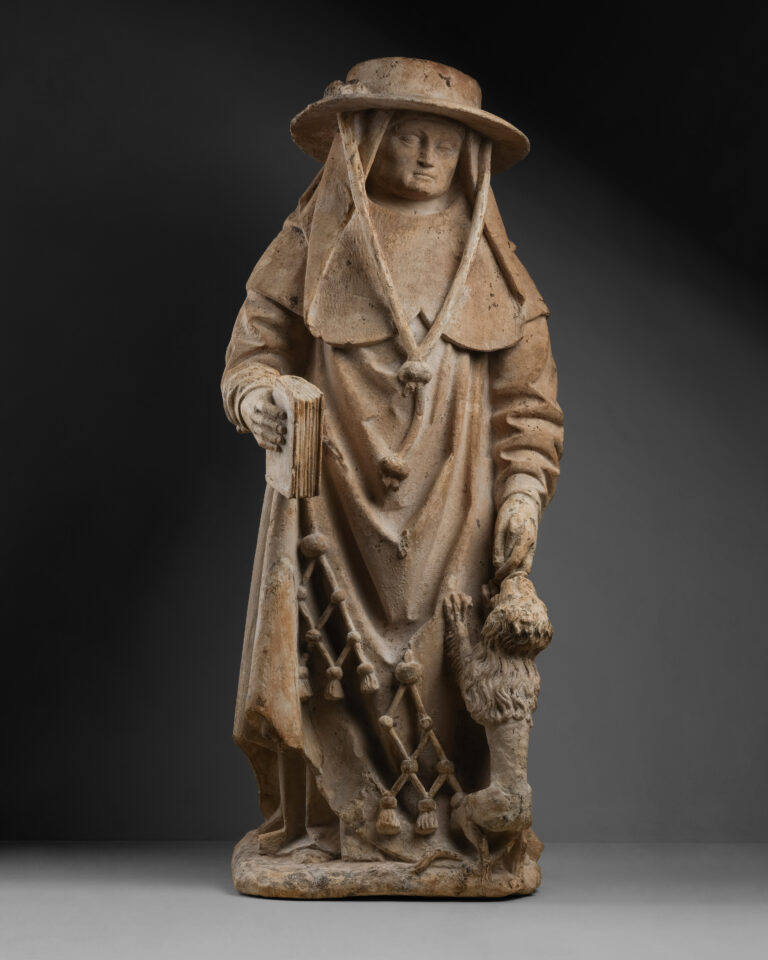« New pieces are daily dug out of the ruins, and new
things present themselves to us, capable of fertilizing, and improving the ideas of an artist
who thinks, and reflects »
Piranesi 1769, 33
The lid combines a rooftop form with a gable, and an altar form with volutes. The gable frame is adorned with lapis lazuli pieces, while the sides of the urn are inlaid with ancient roman coloured marble fragments and fresco’s; held together with lead filling. The urn is a display of small souvenir-tokens collected on the Grand Tour of a distinguished gentleman. Most of the fragments have traces of annotations of where the pieces were found (p.e. forum Trajan, forum, forum Vitellius (?) in accordance with the sophisticated encyclopedic and antiquarian spirit of the 18th century.
This arrangement transforms the fragments themselves into a decorative motif perfectly integrated in a 18th century Roman inspired frame.
This composite cinerary urn bears testimony to the eighteenth-century reception of antiquities as well as to the artist’s distinctive personality: he translated antique style into a vernacular that combined the contemporary context with the wisdom of past styles.
This archaeological “pastiche” is a unique example of the refined aristocratic Grand Tour taste and visually evokes the aesthetic of Piranesi. It is an exaggerated but palpable reflection of Piranesi’s championing of the significance of the fragment—his belief in the communicative power inherent in pieces of material culture. By their very existence and especially when juxtaposed, these fragments could, through implication, open new avenues of artistic creativity.
This Grand Tour cinerarium serves as a microcosm of the broader cultural phenomena of the time. It embodies the period’s obsession with collecting and curating pieces of the past, driven by a desire to connect with the roots of Western civilization.
